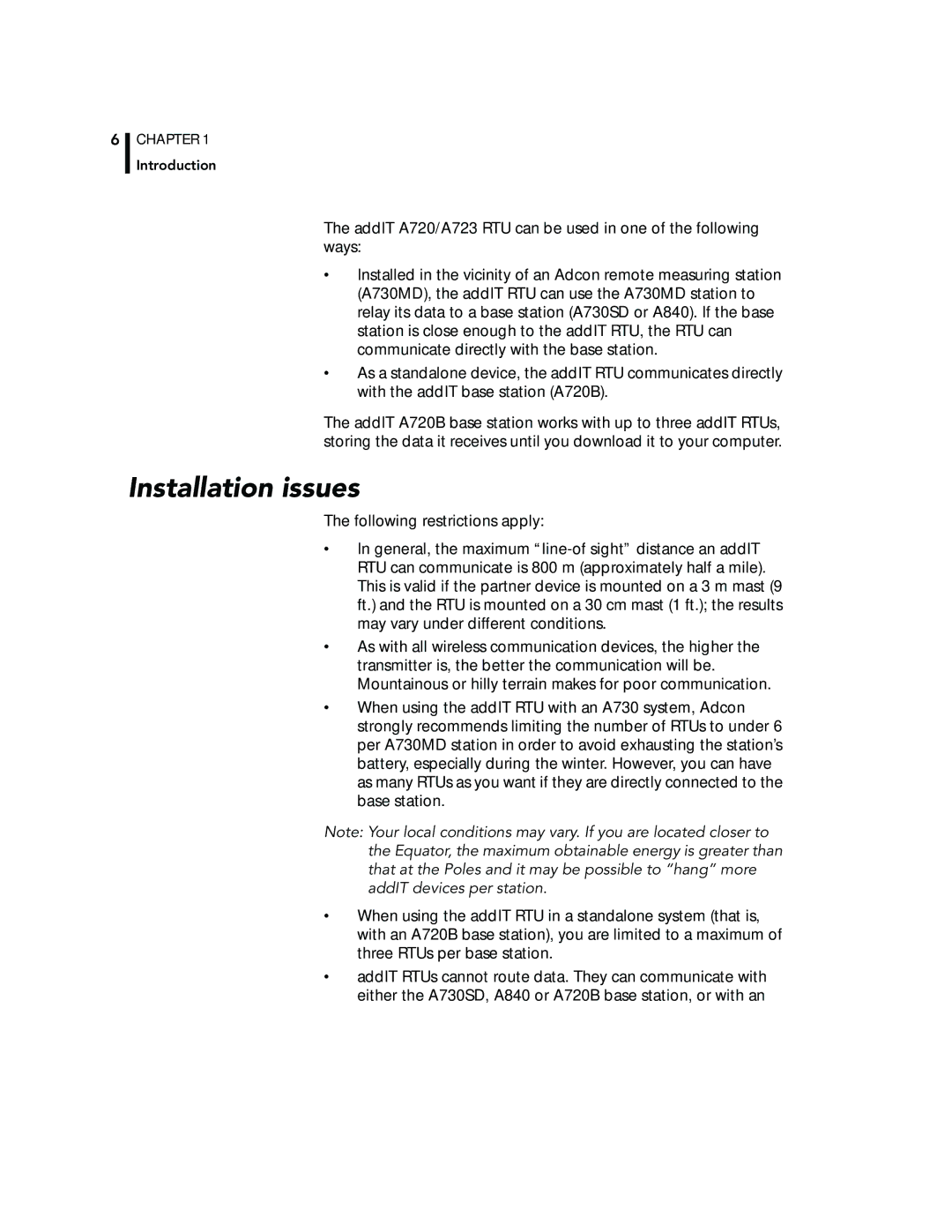6
CHAPTER 1
Introduction
The addIT A720/A723 RTU can be used in one of the following ways:
•Installed in the vicinity of an Adcon remote measuring station (A730MD), the addIT RTU can use the A730MD station to relay its data to a base station (A730SD or A840). If the base station is close enough to the addIT RTU, the RTU can communicate directly with the base station.
•As a standalone device, the addIT RTU communicates directly with the addIT base station (A720B).
The addIT A720B base station works with up to three addIT RTUs, storing the data it receives until you download it to your computer.
Installation issues
The following restrictions apply:
•In general, the maximum
•As with all wireless communication devices, the higher the transmitter is, the better the communication will be. Mountainous or hilly terrain makes for poor communication.
•When using the addIT RTU with an A730 system, Adcon strongly recommends limiting the number of RTUs to under 6 per A730MD station in order to avoid exhausting the station’s battery, especially during the winter. However, you can have as many RTUs as you want if they are directly connected to the base station.
Note: Your local conditions may vary. If you are located closer to the Equator, the maximum obtainable energy is greater than that at the Poles and it may be possible to “hang” more addIT devices per station.
•When using the addIT RTU in a standalone system (that is, with an A720B base station), you are limited to a maximum of three RTUs per base station.
•addIT RTUs cannot route data. They can communicate with either the A730SD, A840 or A720B base station, or with an
